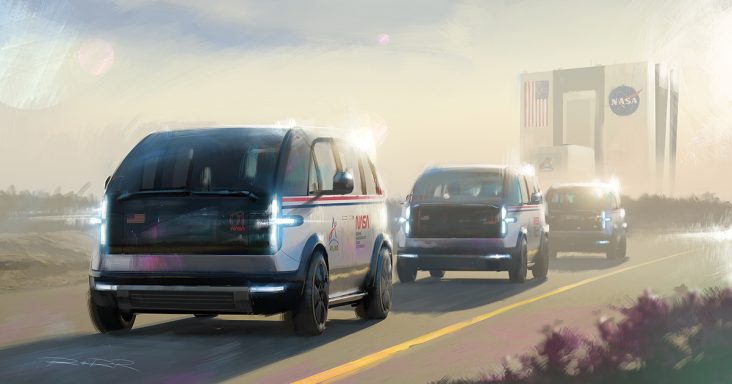Bentonville-made EVs to support moon mission
by April 30, 2022 9:59 am 2,084 views

Three Bentonville-manufactured electric vehicles are expected to transport fully-suited NASA astronauts to their moon-bound spacecraft as part of a mission to complete the first human lunar landing in more than 50 years.
Bentonville-based electric vehicle maker Canoo Inc. recently announced NASA selected the company to provide crew transportation vehicles for the crewed Artemis lunar exploration launches. The company will deliver three custom vehicles to NASA by June 2023. According to a Canoo spokesman, the announcement was made from the office of the CEO, located in Justin, Texas, but its headquarters is in Bentonville.
The vehicles are expected to be manufactured at its advanced industrialization facility in Bentonville, the spokesman said. Canoo plans to launch commercial production from its Bentonville facility in late 2022. It recently named Bentonville as its headquarters and advanced manufacturing site and Pryor, Okla., as the site of its mega micro-factory. The company is expected to bring more than 2,700 high-tech jobs directly and attract more indirectly to the region.
The crew transportation vehicles will be based on Canoo’s lifestyle vehicle (LV) model. According to a NASA news release, each one must seat eight, including four fully-suited astronauts, their support team and equipment. They will be transported on a 9-mile stretch of road from the Neil Armstrong Operations and Checkout Building to Launch Pad 39B at Kennedy Space Center in Florida.
“We are honored to transport the Artemis crew to the launch site for the first human lunar landing in more than 50 years,” said Tony Aquila, investor, chairman and CEO of Canoo. “The selection of our innovative technologies by NASA to take a diverse team of American astronauts to the moon showcases a great commitment to sustainable transportation. As a high-tech mobility company, we are inspired by NASA’s pioneering and trailblazing spirit. Our customized vehicles are modular and upgradable throughout their lifecycle with a high level of recyclability at end of life.”
